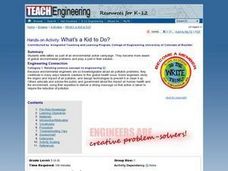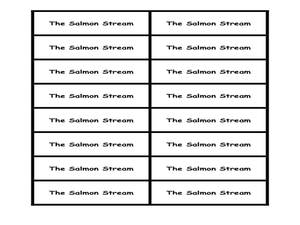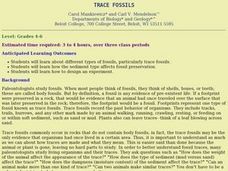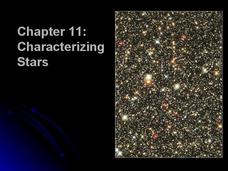Curated OER
What's Down There
Learners write an essay about the coral reefs. In this oceanography lesson, students investigate the reef of Bonaire and compare it to reefs that are not thriving. Learners then explore the differences that contribute to the overall...
Curated OER
What Lives in the Open Ocean and Where Do They Live?
Students explore oceanography by participating in a flash card activity. In this ocean inhabitant lesson, students define a list of ocean related vocabulary terms and answer ocean geography study questions. Students utilize organism...
Curated OER
Recycling
In this recycling worksheet, students explore what materials can be recycled and the impact recycling can have on conserving resources. This worksheet has 8 short answer questions.
Curated OER
4-H Food Science- Intermediate Activity
In this nutrition worksheet set, students complete a dinner detective nutrient fill in the blank, a food safety true or false page, and plan a picnic with food safety rules in mind. They investigate careers that involve food safety.
Curated OER
What's Wrong With Nuclear Power, Anyway?
Students see that the production and use of nuclear energy has been both praised and condemned as a source of electrical power for our daily living. They examine the reasons for the conflict of opinions in our society.
Curated OER
What Happened to the Water? Designing Ways to Get and Clean Water
Students design ways to clean a water source or find a new water source depending on various hypothetical family scenarios. They draw and write about how to provide water to a community facing a water crisis, and present their solutions...
Curated OER
What's a Kid to Do?
Students participate in an environmental action letter-writing campaign. They conduct Internet research on the Global Response website, discuss various successful Global Response campaigns, select a campaign they are interested in, and...
Curated OER
Science Egg Experiment
Students examine and hypothesize about hard cooked and raw eggs before experimenting to see which one cracks more easily when dropped in a bucket. They open both eggs and compare them using a Venn diagram. They design a presentation...
Curated OER
What's the Attraction
Students sort objects based on magnetism. In this magnetism lesson, students are given a variety of objects, then predict whether the object will be attracted to a magnet and test their hypothesis as they sort the objects into "yes" and...
Curated OER
Modeling changes to Ecosystems Part 1
Students record changes in an ecosystem. In this science lesson students make a hypothesis about changes in a terrarium. They record their observations. The students conduct an experiment to test their hypothesis.
Curated OER
Water Pollution Lesson Plan: What's the Flow?
Students study urban runoff. They identify the urban runoff in a simulated area and determine peak flows using charted data. Finally, they discuss possible causes of the differences in flow rates.
Curated OER
What are Atoms?
In this atom worksheet, students read about Dalton's contributions to the structure of the atom. They answer five questions about Dalton's ideas, the law of multiple proportions and the law of definite proportions.
Curated OER
The Salmon Stream and Vegetation
Students explore the ecosystem and food chain by researching Pacific Salmon. In this fish habitat lesson plan, students discover the life cycle for salmon, where they spawn and what they eat to survive the harsh elements. Students...
Curated OER
Measuring Body Fat
In this body fat measurement activity, students will conduct an experiment to determine how the "under-water weighing" technique of measuring body fat works. Once the experiment is complete, students will complete 1 short answer question.
Curated OER
Applied Science - Physics (K) Post Lab
Students are introduced to electricity. In this electricity lesson, students listen to the book Switch on, Switch off by Melvin Berger and discuss the use of electricity in light switches. They create a picture of an atom using pom...
Curated OER
Use It or Lose It
Students explore the effects of resistance training on the muscles. Data on the muscle mass of rats is examined is graphed to determine any increase in mass due to training.
Curated OER
Which Brand of Air Freshener is Most Cost Effective?
Young scholars use scientific method to determine cost-effectiveness of air freshener, and create PowerPoint presentations to share their results.
Curated OER
Science: Making Trace Fossils
Learners explore types of fossils and discover how sediment affects fossil preservation. They focus their study on trace fossils and create their own using sediment, water, and a small organism such as a snail or lizard. Students use...
Curated OER
What Tree is That?
Students examine leaves and the trees in their neighborhood that they came from. In this ecology lesson, students read the book, I Can Name 50 Trees Today, and discuss how a tree goes from a forest to a wood shop. Students...
Curated OER
Is the Hudson River Too Salty to Drink?
In this estuary worksheet, students examine data about the salinity of the Hudson River, create a graph from given data and complete 12 short answer questions about the data and graph.
Curated OER
RISKS AND BENEFITS
Students explore how to assess and weigh the risks and benefits associated with innovations in science and technology.
New South Wales Department of Education
Photosynthesis
Venus fly traps photosynthesize and consume insects because the soil they live in does not provide enough nutrients. Scholars analyze historical scientific experiments to learn how scientists discovered photosynthesis. From their...
Polar Trec
Nature's Density Column
Nature provides density columns in the polar regions that provides food for many animals. Young scientists build their own density columns with water in order to answer analysis questions. Through a slideshow presentation, scholars...
Glynn County School System
Characterizing Stars
Are brighter stars actually brighter? Turns out they are probably just closer! A presentation compares features of stars to our favorite star, the sun. In addition, solar lovers learn to classify stars based on their masses,...























